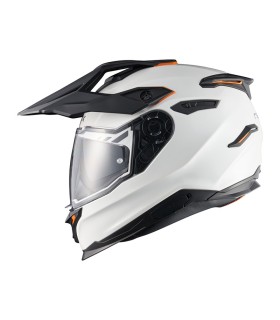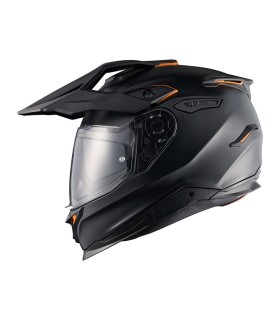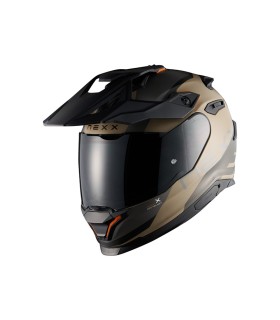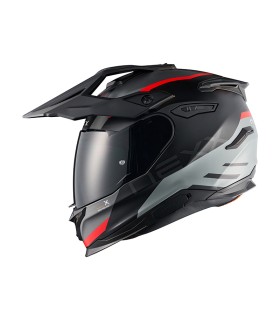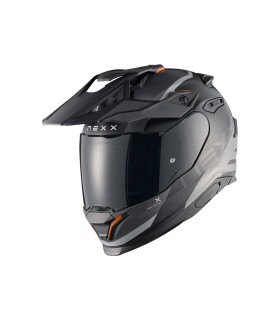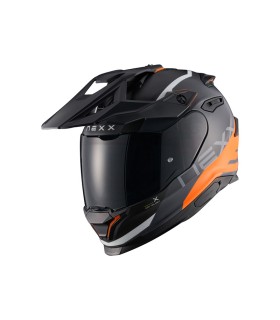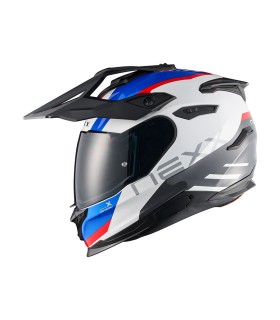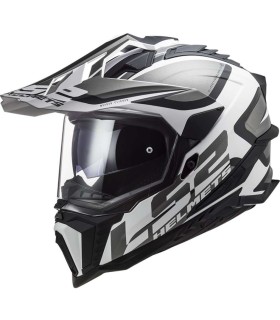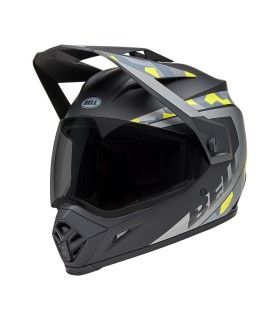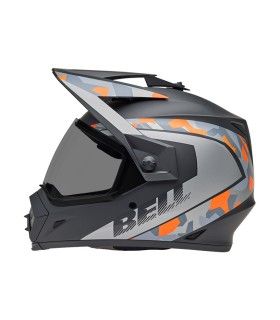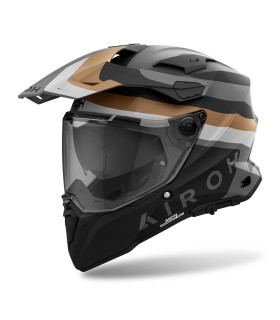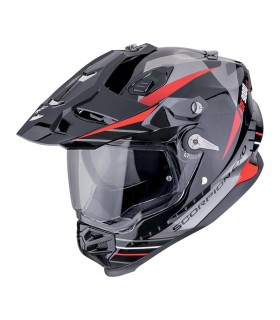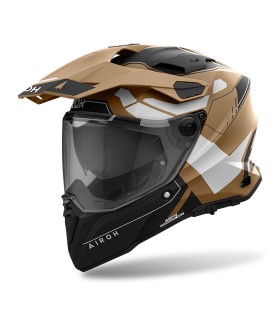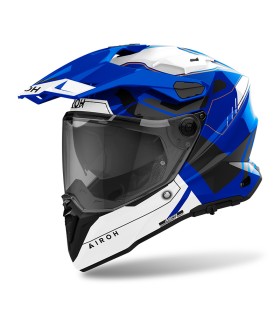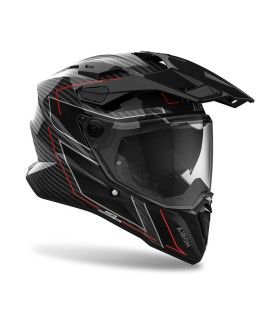What’s the point of wearing motorcycle helmets?
Helmets are essential safety devices to prevent injuries in an uncontrolled environment. It’s true that you can’t prevent an accident, but the use of a helmet can prevent or minimize head injuries. We can’t stress enough that the first step in preventing injuries is to minimize the likelihood of crashing or being hit. Not hitting something hard is much more better than hitting it with a helmet! There are many reasons for this statement. No helmet can protect against all possible impacts and the impact can exceed the protection of the helmet. No helmet protects any part of the body that doesn’t cover, so even if the head injury is avoided you may have a flushed face, broken bones or worse. But safety always involves compromises. A helmet that could completely protect against any impact could be huge. Helmets are designed to maintain the expected impacts within the tolerance range of the human brain. The technical skills underlying the design of high quality helmets are based on understanding what happens to the head in case there’s a motorcycle accident.
Why are helmets necessary?
During a motorcycle accident there are two main brain injury mechanisms: through direct contact and through acceleration or deceleration. Each mechanism causes different types of injuries. When a motorcycle is involved in a collision, the pilot is often thrown out from the vehicle. If the driver's head hits an object or the ground, the forward movement of the head is stopped, but the brain, with its own mass, continues to move forward until it hits the inside of the skull. Then it bounces, hitting the opposite side of the skull. This type of injury can involve anything from a minor head injury, such as a concussion, to a fatal head injury. Head injuries resulting from contact or injury due to acceleration and deceleration are themselves divided into two categories: open or closed head injuries. Most traumatic injuries are brain injuries resulting from closed head injuries - in other words, there is no wound that exposes the brain. Precisely for these reasons, wearing a quality helmet is essential, as a matter of fact motorcyclists who don’t wear a helmet run a much greater risk of incurring one of these traumatic brain and head injuries, or a combination of them. Helmets create an additional layer for the head and thus protect the wearer from some of the most severe forms of head injury. A helmet aims to reduce the risk of serious head and brain injuries by reducing the impact of a force or collision on the head.
How does a motorcycle helmet work?
A helmet works in three ways: it reduces the deceleration of the skull, and therefore the movement of the brain, managing the impact. The soft material incorporated in the helmet absorbs some of the impacts and therefore the head stops more slowly. This means that the brain doesn’t strike the skull with excessive force. In addition, impact forces are spread over a larger surface so that they are not concentrated on particular areas of the skull. Finally, it prevents direct contact between the skull and the object it strikes by acting as a mechanical barrier between the head and the object. These three functions are obtained by combining the properties of four basic components of the helmet: the rigid outer shell, the shock absorbing lining, the visor and the retention system. The shell is the strong external surface of the helmet that distributes the impact on a large surface, and therefore reduces the force before it reaches the head even if the shell is resistant, it’s designed to compress when it hits something hard. It provides protection against penetration from small, sharp and high speed objects and also protects the padding inside the helmet from abrasion and impact during daily use. The shock absorbing lining is made of a soft and breathable padded material - usually expanded polystyrene. This thick layer cushions absorbs the shock when the helmet stops and the head tries to keep moving. Helmets designed to handle the most incident energy generally contain a layer of friable foam. When you crash and hit a hard surface, the foam part of a helmet is crushed, controlling the incident energy and prolonging the stopping time of the head by about six thousandths of a second to reduce the maximum impact to the brain. Rotational forces and internal tensions are probably reduced by crushing. The thicker the foam the better, because it gives your head more space and milliseconds to stop. If the foam has a thickness of 15 mm, obviously it’s necessary to stop at half the distance of a 30 mm thick foam. The fundamental laws of physics give more strength to the brain if the stopping distance is shorter, whatever the foam is. Even the less dense foam can be better, as it can be crushed in a lesser impact, but it must be thicker to avoid crushing too much into a harder impact. If the helmet is very thick, the outer circumference of the head is indeed extended. If the helmet doesn’t slip on the surface of the crash, this will pull more on the head, contributing to the strain on the neck and probably to the forces of rotation on the brain. So, there are always compromises and a super-thick helmet is probably not optimal.
Property of a motorcycle helmet
In most helmets a layer of plastic holds the foam of the helmet together as it crushes and helps it to slide easily over the surface of the accident, rather than raising its head. In activities involving forward speed on rough pavement, rounder helmets are safer, as they slide more easily. The comfortable padding is composed by the soft foam layer that is located near the head. It helps keep the head comfortable and the helmet close-fitting. The retention system or chin strap is the mechanism that keeps the helmet on the head in the event of an accident. One strap is attached to each side of the shell. Chin and neck straps are specially designed to keep the helmet attached during an incident sequence. A helmet must fit well and be on the head so that the entire head remains covered after that first impact. Helmets designed for less impact don’t necessarily have foam inside. Some of them are just rigid shells with a suspension band that provides the fit and maintains an interior space to circulate air. The foams of some helmets are brittle but they never recover. If you crash a helmet made with the usual polystyrene foam, it gets broken and you can't use it again. In addition to all of that, a helmet must be designed to adapt to weather and traffic conditions. The materials used in the construction of a helmet shouldn’t degrade over time, or through exposure to adverse weather conditions, nor should they be toxic or cause allergic reactions. Currently, the commonly used plastic materials are expanded polystyrene (EPS), Acrylonitrile Butadiene Styrene (ABS), Poly Carbon (PC) and Poly Propylene (PP). While the material of the helmet shell generally contains PC, PVC, ABS or fiberglass, the breathable lining inside the shell is often made of EPS - a material that can absorb shocks and impacts and is relatively cheap. However, helmets with EPS linings should be replaced after an accident, and in any case users should replace these helmets after 3-5 years of use.
Dual sport helmets
In addition to full face helmets and modular helmets, there are also dual sport helmets: they are created specifically to meet the needs of the driver and are used in particular by those who drive motocross. These are some of the most recognizable helmets you will see because they have a tendency to resemble hats of a futuristic space warrior. These helmets are best used by motorcyclists who are literally sharing their time between paths and roads. The most important features of the dual sport helmet are the inclusion of a pronounced peak and an expanded facial shield. These are taken from the off-road world and serve to give riders an advantage when they take an off-road trail. The visor works to divert dirt, stones and other debris while shielding your eyes from the sun; the extended eyepiece often allows riders to wear, if they wish, a pair of glasses that help reduce dust and dirt coming from the opening at the base of the jaw. A real dual sport helmet can cause some distractions. Although it works perfectly for its purpose, it’s important to consider that the wind can be annoying with this helmet when you are driving for many kilometers. At the same time, the overall aerodynamics of the outer shell itself can’t cut the air as the full face, modular and even half face helmets.


